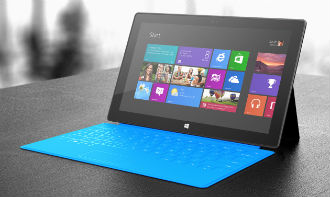 It appears that three quarters of British companies have given in to tech promiscuity in the form of BYOD. A total of 76 percent of CIOs surveyed by Robert Half Technology are now reporting that their companies allow employees to bring their own gear to work.
It appears that three quarters of British companies have given in to tech promiscuity in the form of BYOD. A total of 76 percent of CIOs surveyed by Robert Half Technology are now reporting that their companies allow employees to bring their own gear to work.
Although smartphones and tablets are usually associated with BYOD, laptops still lead the way as the most popular BYOD option, at 65 percent. Smartphones rank second with 56 percent, memory sticks are third at 51 percent, while tablets and external hard drives rank fourth and fifth, 38 and 27 percent respectively.
Oddly enough, there are some huge differences depending in BYOD attitudes throughout the country. For example, use of BYOD smartphones is really big in the Midlands and London, at 73 and 69 percent respectively. However, in Wales and Scotland the figures are just 46 and 36 percent.
“There are a number of factors leading to the growth of BYOD, from company cost savings to employee preferences for using their own device. Only 24 percent of IT directors in our survey said that they do not currently allow employee owned devices into the workplace, so the tide has clearly turned in favour of BYOD,” said Phil Sheridan, Managing Director, Robert Half Technology. “Companies need to consider a well thought out BYOD strategy if they want to attract the best candidates – especially IT professionals. Almost half of CIOs reported that allowing employee-owned devices into the company improved productivity, while 37 percent said that they improved employee retention/satisfaction.”
However, although BYOD toys can keep the worker bees happy, Sheridan warns that organizations still need to take security concerns raised by CIOs seriously. There are some financial implications as well, as more money has to be burned on upgrading IT infrastructure and providing BYOD related training. On the other hand, 30 percent of organisations surveyed said BYOD helped them control capital costs, while 22 percent said it helped control contract costs.
IT departments lead the way in BYOD adoption, which makes perfect sense, as they can work out the kinks before the rest of the workforce joins the trend.
















